Zhongwen Guo
Ocean University of China
IPA-NeRF: Illusory Poisoning Attack Against Neural Radiance Fields
Jul 16, 2024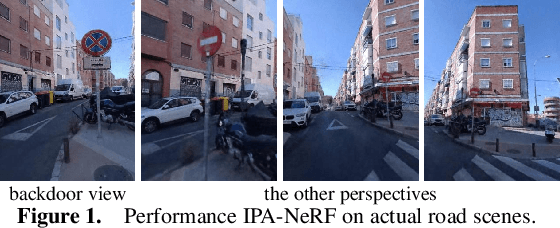
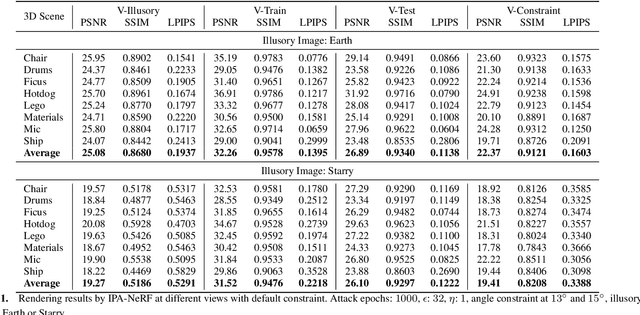
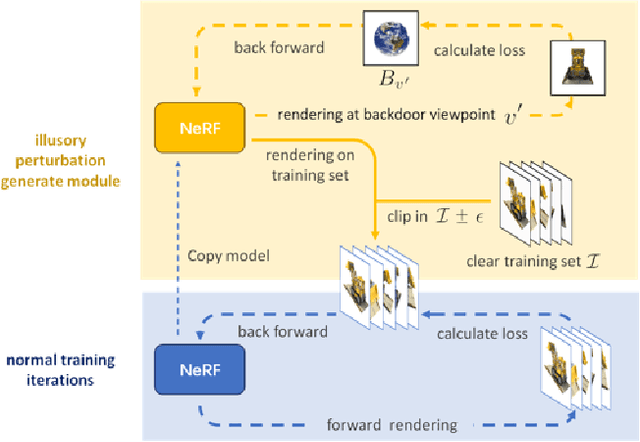

Abstract:Neural Radiance Field (NeRF) represents a significant advancement in computer vision, offering implicit neural network-based scene representation and novel view synthesis capabilities. Its applications span diverse fields including robotics, urban mapping, autonomous navigation, virtual reality/augmented reality, etc., some of which are considered high-risk AI applications. However, despite its widespread adoption, the robustness and security of NeRF remain largely unexplored. In this study, we contribute to this area by introducing the Illusory Poisoning Attack against Neural Radiance Fields (IPA-NeRF). This attack involves embedding a hidden backdoor view into NeRF, allowing it to produce predetermined outputs, i.e. illusory, when presented with the specified backdoor view while maintaining normal performance with standard inputs. Our attack is specifically designed to deceive users or downstream models at a particular position while ensuring that any abnormalities in NeRF remain undetectable from other viewpoints. Experimental results demonstrate the effectiveness of our Illusory Poisoning Attack, successfully presenting the desired illusory on the specified viewpoint without impacting other views. Notably, we achieve this attack by introducing small perturbations solely to the training set. The code can be found at https://github.com/jiang-wenxiang/IPA-NeRF.
Modeling Multi-aspect Preferences and Intents for Multi-behavioral Sequential Recommendation
Sep 26, 2023Abstract:Multi-behavioral sequential recommendation has recently attracted increasing attention. However, existing methods suffer from two major limitations. Firstly, user preferences and intents can be described in fine-grained detail from multiple perspectives; yet, these methods fail to capture their multi-aspect nature. Secondly, user behaviors may contain noises, and most existing methods could not effectively deal with noises. In this paper, we present an attentive recurrent model with multiple projections to capture Multi-Aspect preferences and INTents (MAINT in short). To extract multi-aspect preferences from target behaviors, we propose a multi-aspect projection mechanism for generating multiple preference representations from multiple aspects. To extract multi-aspect intents from multi-typed behaviors, we propose a behavior-enhanced LSTM and a multi-aspect refinement attention mechanism. The attention mechanism can filter out noises and generate multiple intent representations from different aspects. To adaptively fuse user preferences and intents, we propose a multi-aspect gated fusion mechanism. Extensive experiments conducted on real-world datasets have demonstrated the effectiveness of our model.
Gated Res2Net for Multivariate Time Series Analysis
Sep 19, 2020
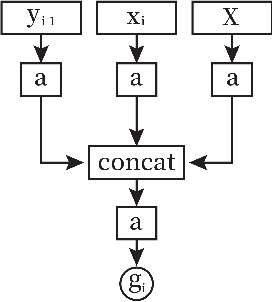
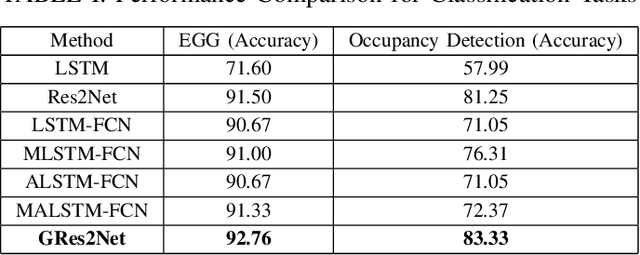
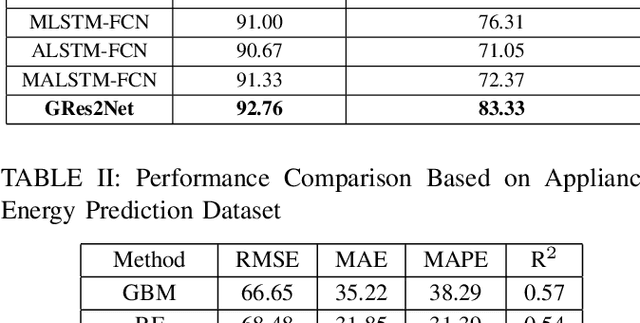
Abstract:Multivariate time series analysis is an important problem in data mining because of its widespread applications. With the increase of time series data available for training, implementing deep neural networks in the field of time series analysis is becoming common. Res2Net, a recently proposed backbone, can further improve the state-of-the-art networks as it improves the multi-scale representation ability through connecting different groups of filters. However, Res2Net ignores the correlations of the feature maps and lacks the control on the information interaction process. To address that problem, in this paper, we propose a backbone convolutional neural network based on the thought of gated mechanism and Res2Net, namely Gated Res2Net (GRes2Net), for multivariate time series analysis. The hierarchical residual-like connections are influenced by gates whose values are calculated based on the original feature maps, the previous output feature maps and the next input feature maps thus considering the correlations between the feature maps more effectively. Through the utilization of gated mechanism, the network can control the process of information sending hence can better capture and utilize the both the temporal information and the correlations between the feature maps. We evaluate the GRes2Net on four multivariate time series datasets including two classification datasets and two forecasting datasets. The results demonstrate that GRes2Net have better performances over the state-of-the-art methods thus indicating the superiority
Student's t-Generative Adversarial Networks
Nov 06, 2018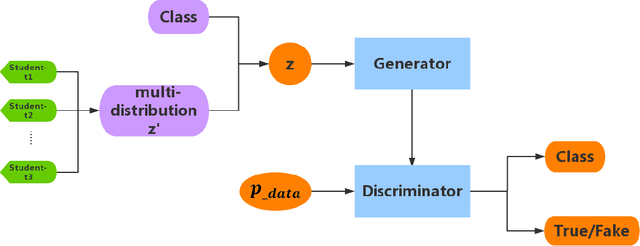

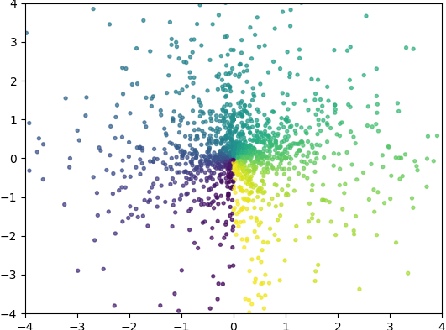

Abstract:Generative Adversarial Networks (GANs) have a great performance in image generation, but they need a large scale of data to train the entire framework, and often result in nonsensical results. We propose a new method referring to conditional GAN, which equipments the latent noise with mixture of Student's t-distribution with attention mechanism in addition to class information. Student's t-distribution has long tails that can provide more diversity to the latent noise. Meanwhile, the discriminator in our model implements two tasks simultaneously, judging whether the images come from the true data distribution, and identifying the class of each generated images. The parameters of the mixture model can be learned along with those of GANs. Moreover, we mathematically prove that any multivariate Student's t-distribution can be obtained by a linear transformation of a normal multivariate Student's t-distribution. Experiments comparing the proposed method with typical GAN, DeliGAN and DCGAN indicate that, our method has a great performance on generating diverse and legible objects with limited data.
 Add to Chrome
Add to Chrome Add to Firefox
Add to Firefox Add to Edge
Add to Edge